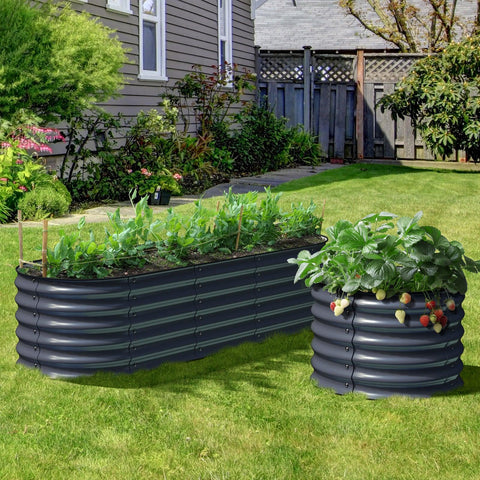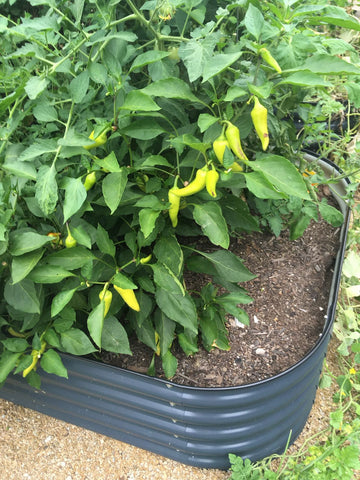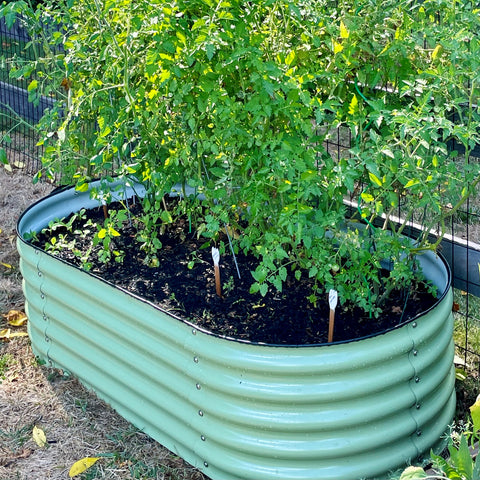Tips from Olle Garden Bed: How to Grow Vegetables Fast?
There are many ways to grow vegetables. On the basis of choosing good varieties, the key problem is to solve the problem of water and fertilizer, reasonable regulation of temperature and light. The following content also has some reference value for raised garden beds.

1. Choose disease-resistant, insect-resistant and high-quality varieties. Planting vegetables is to eat themselves, raw insect disease is inevitable, do not ignore the problem of disease resistance and insect resistance for the so-called high-yield varieties. It is the basis for the rapid growth of vegetable seedlings to choose the vegetable types and varieties with fewer diseases and pests. Generally speaking, cilantro, spinach, leek, fennel and lettuce have fewer diseases and pests. Different vegetables also have varieties with strong disease resistance, some of which are old varieties with strong disease resistance.
2. Grow vegetables in large containers. Generally choose large wooden boxes, raised beds, flower beds, large POTS of vegetables, heat preservation, moisture and fertilizer retention ability is strong, can reduce watering and fertilization times, promote the rapid growth of vegetables.
3. The soil should be rich. It is not suitable to choose idyllic soil for planting vegetables, instead, homemade nutritious soil should be chosen for planting. Only with sufficient organic fertilizer can root development be promoted and water and fertilizer retention ability be strong. The bottom needs to be covered with tiles, window screens, etc., to prevent the blockage of drainage holes, to ensure that the drain and soil moisture.
4. Adjust the temperature and humidity. In low temperature season, you can wrap a layer of insulating layer such as sponge around the raised bed or flowerpot, and cover the surface of the basin with a layer of film or plastic bag. If possible, placing a small arch over a raised bed or flowerpot can increase soil and air temperature and encourage early growth.

In the high temperature season, it is necessary to shade vegetables that are not resistant to strong light and high temperature, or move them to the shade for curing. Water once every 2 to 5 days, according to the growth period timely apply fully decomposed soybean water, rice water, etc. Fertilizing and watering in the afternoon after the sun sets, if necessary, can spray water during the high temperature, prevent often wilting.
Some vegetables need to see dry and wet, some like relatively dry soil, some need to keep the soil wet for a long time to grow fast and grow well, so we need to determine the appropriate amount of watering and interval time according to the types of vegetables. The general principle is to avoid low temperature and humidity in winter, and avoid dry and wet and stagnant water in high temperature season.
5. Plant properly. Green leafy vegetables and leeks and garlic vegetables can be planted closely, but need to be timely thinning, to ensure that the outer leaves do not overlap each other to the degree. If you don't finish your vegetables, you need to pull them out and put them in the refrigerator. Melon vegetables, legumes and jacket vegetables need to maintain a reasonable density, not too dense. On this basis, it is necessary to build a frame, tie the vine, break the top, remove the excess branches and fruit, etc., to ensure that the light of the inner branches is sufficient, otherwise there will be barren growth, falling flowers and fruit and uneven fruit size.
6. Homemade pesticides to control pests and diseases. The most important thing about balcony vegetables is that there is no chemical fertilizer and pesticide pollution. It is impossible to use chemical fertilizer and pesticide. On the basis of artificial pest capture, smoke pole water, washing powder water, white vinegar and so on can be used to improve the pH, inhibit the growth of pests and diseases, to achieve the purpose of eliminating pests and diseases.

7. Replace the soil every year. Vegetable pests and diseases are more, can not grow the same type of vegetables in the field of repeated cropping. Planting vegetables in POTS is also a reason. After planting vegetables for a year, replace the soil, pour out the original nutrient soil, add kitchen waste and re-decompose it, which can wipe out the vast majority of pathogens and pests in the soil. Grow vegetables with fresh soil in a pot or foam box.
8. Planting vegetables and flowers need to adjust the soil pH. After choosing vegetables and plants to plant, acidic humus soil and ferrous sulfate can be added to those who like slightly acidic soil, so that the pH can be adjusted below 7. If vegetables and flowers need slightly alkaline soil, alkaline substances such as quicklime and gypsum can be stirred 30 days in advance to adjust the PH to about 7.5, which is conducive to the rapid growth of vegetables and flowers
